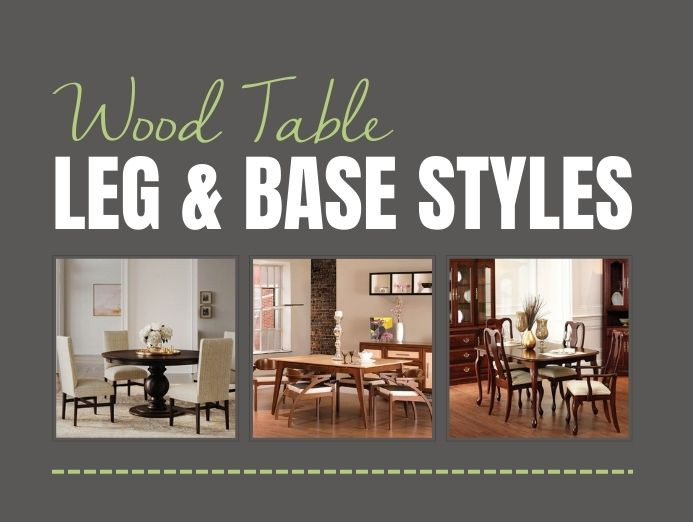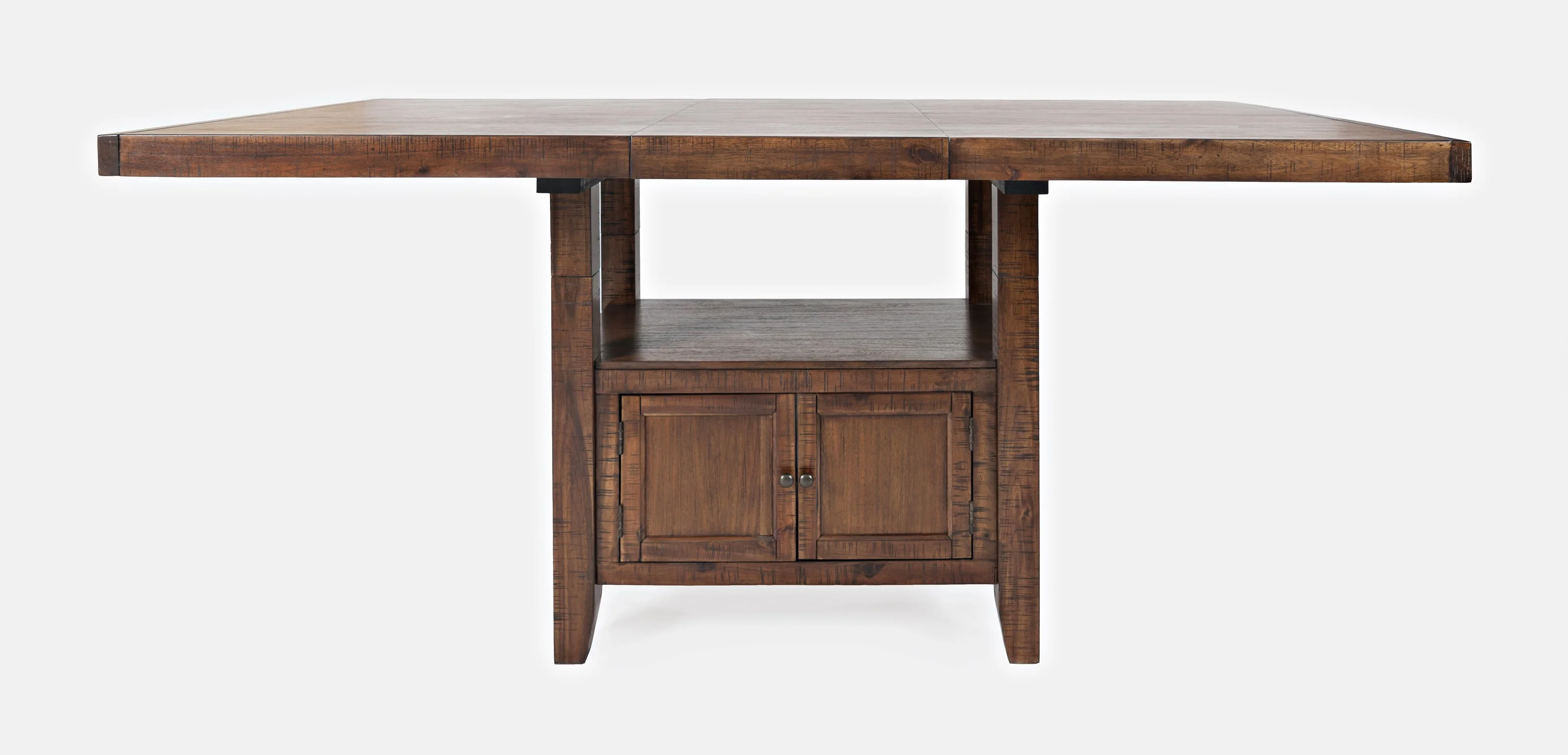Why Custom Dining Room Table Legs Are Worth the Investment
Why Custom Dining Room Table Legs Are Worth the Investment
Blog Article
From Typical to Modern: Discover the Perfect Dining-room Table Legs for Your Style
While classic layouts such as cabriole and turned legs stimulate a sense of ageless sophistication, contemporary designs like barrette and geometric choices offer an opportunity for striking visual passion. As you consider these components, the question remains: exactly how can you effortlessly integrate these varied leg designs to develop a harmonious eating experience?
Comprehending Table Leg Styles
The range of dining-room table leg designs can considerably influence both the aesthetics and functionality of the space. Each leg style contributes special practical functions and visual elements, catering to diverse style preferences and usage demands. Recognizing these designs is essential for selecting the best table that aligns with your general interior decoration vision.
For example, tapered legs provide a clean, timeless look that can boost an area's sophistication, while stand bases supply security and maximize legroom, making them ideal for smaller sized spaces. Barrette legs, a characteristic of mid-century modern-day style, introduce an industrial panache, allowing for a ventilated, open feeling. Likewise, trestle legs evoke rustic beauty, supplying robust assistance and a sense of timelessness.
Furthermore, the selection of products plays a significant duty. Wood legs can bring warmth and structure, whereas metal alternatives usually communicate a sleek, modern vibe. Inevitably, understanding table leg designs is vital for creating a cohesive dining area that reflects personal design while guaranteeing practicality and comfort. By thoughtfully considering these aspects, you can enhance both the practical and visual charm of your eating space.
Standard Table Leg Options
When selecting dining area table legs, traditional choices commonly personify classic beauty and workmanship. These layouts mirror an abundant heritage and a dedication to quality, making them suitable for those that value timeless aesthetics.
Among one of the most legendary traditional leg styles is the cabriole leg, characterized by its stylish rounded form. This style usually includes ornamental makings and is most generally found in Queen Anne and Chippendale furnishings. An additional popular choice is the transformed leg, which boasts a collection of smooth, rounded forms that give a classic appearance while keeping stability.
Additionally, the straight leg, while straightforward, offers a unadorned and sturdy structure that can mix perfectly with a variety of tabletop designs. For those drawn to ornate describing, claw-and-ball feet legs stimulate a sense of grandeur and can function as a magnificent focal factor in any kind of eating area.
Finally, pedestal bases, although not purely legs, give a different standard choice that permits enough legroom and can be beautifully sculpted. Each of these standard leg styles adds to the overall atmosphere of a dining-room, weding function with visual allure.

Modern Table Leg Layouts
Modern table leg designs offer a varied variety of designs that highlight clean lines and ingenious materials. These styles typically focus on functionality while functioning as striking centerpieces within an eating space. Minimal looks are prevalent, with legs crafted from products such as metal, glass, and crafted timber, which contribute to a modern and airy feel.
One preferred design is the barrette leg, characterized by its slender, conical structure that supplies security without overwhelming the tabletop (dining room table legs). This style is typically located in mid-century contemporary furnishings and can easily complement different table shapes. More about the author An additional trend is using geometric forms, where legs might handle asymmetrical or angular forms, including visual passion and a touch of artistry

Blending Styles for Distinct Spaces
Usually, homeowners look for to develop distinct dining rooms that reflect their individual design by blending various design elements. This method enables the incorporation of varied aesthetics, resulting in a harmonious yet distinctive setting. Coupling a rustic wood table with sleek, modern metal legs can create an attractive contrast that boosts the room's total appeal.
Additionally, incorporating vintage table legs with contemporary table tops can evoke a feeling of background while keeping a modern-day sensibility. Such mixes not only display private taste yet likewise a knockout post encourage imagination, allowing home owners to curate an area that feels both individual and inviting.
Color plays an essential duty in this go to website blending procedure; choosing table legs that enhance or contrast with the existing shade scheme can improve aesthetic rate of interest. Whitewashed legs can soften the boldness of a dark table surface area, creating a balanced visual.
Tips for Choosing the Right Legs
Choosing the right table legs is essential for attaining both functionality and aesthetic charm in your eating space. Begin by thinking about the overall style of your area. Traditional settings gain from legs that include elaborate makings or transformed designs, while contemporary areas might require streamlined, minimalist styles.
Next, examine the elevation and stability of the legs. dining room table legs. Common table range between 28 to 30 inches in height, so make sure the legs match this measurement for comfort. Furthermore, durable products, such as wood or steel, can enhance stability and durability
Examine the leg shape as well-- options include straight, tapered, or stand layouts. Straight legs use a timeless look, while tapered legs can include a touch of style. Pedestal bases provide sufficient legroom and are optimal for smaller sized rooms.
Verdict
In summary, selecting the excellent dining area table legs needs careful factor to consider of both contemporary and conventional designs. By balancing leg style, elevation, and material with the overall decor, a natural and inviting ambience can be accomplished.
The variety of dining room table leg designs can substantially influence both the aesthetics and capability of the space. Ultimately, recognizing table leg styles is essential for developing a cohesive eating area that mirrors personal design while guaranteeing usefulness and comfort.One of the most legendary conventional leg styles is the cabriole leg, defined by its stylish rounded form. Straight legs offer a timeless look, while conical legs can include a touch of beauty.In recap, selecting the perfect eating area table legs needs mindful consideration of both standard and modern-day styles.
Report this page